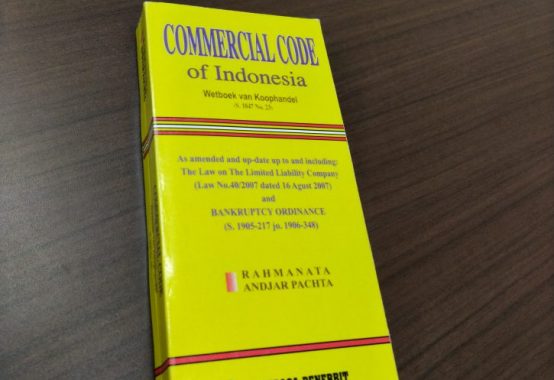I had a chance to briefly explain the types of Japanese Business Organization to Indonesian legal professions, thus prepared this article.
I hope it will be helpful for your understanding of Japanese Business Organizations.
P.S. This Mt. Fuji’s Photo was taken in Mt. Nabewari on December 1, 2018.
***************************************
I would introduce Japanese Business Organizations as compared with Indonesian. There are basically four (4) types of partnership, which does not have legal personality, and four (4) types of Company having judicial personality. Of course, there are other types of Business Vehicle based on Special Regulations, however, I do not mention them in this articles.
Compared to Maatschap
Maatschap is equivalent to “Partnership” provided in Section 12 of Japanese Civil Code. Partnership is called “Kumiai” in Japanese. Article 667 (1) provides that “A partnership contract shall become effective when each of the parties promises to engage in joint business by making a contribution”. It is a contract between partners, thus there is no legal personality and no registration system. In addition, Partnership has commercial or non-commercial purpose.
The subject of the contribution may be services (labor) (Art. 667(2)) as well as money and goods. The contributions of the partners and other partnership property shall be jointly owned by all partners (Art. 668). The claim of partnership shall be interpreted not to be divided into each partner. The partners shall be directly and unlimitedly liable to the partnership’s debt in accordance with the proportions of the partner’s shares. According to Article 675, “If a creditor of a partnership did not know, when his/her claim arose, the proportions of the partners’ shares of losses, the creditor may exercise his/her rights against each partner in equal proportions.”
The management of partnership business shall be determined by the majority of the partners (Art. 670 (1)), and if more than one person is delegated to manage the business under the partnership contract (Operating Officers), the management of partnership shall be determined by majority of them (Art. 670 (2)). There is no provision regarding the authority of an Operating Officer in case there is only one (1) Operating Officer, I interpret that he/she can manage the partnership business in his/her sole discretion. In addition, the ordinary business of a partnership may be performed by each partner or each Operating Officer individually; provided, however, that this shall not apply if other partners or Operating Officers raise objections prior to the completion of the business (Art. 670 (3)).
Compared to Firma
I would say that Firma is also similar to “Partnership”. As one feature of Firma, it is used for commercial purpose. Japanese “Partnership” is used for commercial purpose as well as non-commercial purpose. Moreover, “A partner may not seek the division of the partnership property before the same is liquidated” (Art. 676 (2)). Thus, it is interpreted that Japanese Partnership has its own property, to a certain degree, apart from partners’ property. Such property shall be jointly owned by all partners (Art. 668). However, the creditors holding claims regarding Partnership Business do not have the priority over the creditors of each individual partner. This point is different from Firma.
In addition, Partnership does not have legal personality, registration system, and common name system. In case of Law suits, partners become plaintiffs or defendants, and Partnership cannot be the party of the case.
Compared to Commanditaire Vennootschap (C.V.)
C.V. is similar to “Investment LPS” or “Silent Partnership” in Japan.
(1) Investment LPS
Investment LPS is established based on Limited Partnership Act for Investment. It is called “Toushi Jigyou Yuugen Sekinin Kumiai”. Article 2 (2) states that “Investment LPS” means a partnership that is formed from general partners and limited partners pursuant to a limited partnership agreement for investment as set forth in paragraph 1 of the following Article. According to Article 3 (1), “A limited partnership agreement for investment (hereinafter a “Partnership Agreement”) shall take effect upon agreement by the parties to invest capital and jointly to carry out any or all of the following business activities:” such as acquisition and holding of shares, share option, monetary claim against enterprise, industrial property or copyrights owned by enterprise, and so on. Thus, the business activities of Investment LPS is restricted to investment business enumerated on Article 3 (1).
Investment LPS is an agreement among partners, thus it has no legal personality. However, it shall be registered (Art. 17), unlike “Partnership” based on Civil Code.
Article 6 (2) provides that “A partner’s investment in the Partnership may be made only in the form of cash or other properties.” Article 668 (joint ownership of partnership assets) of Civil Code shall apply mutatis mutandis with respect to Investment LPS (Art. 16).
Regarding Manner of Management of the Partnership, Article 7 (1) prescribes that “The general partners shall manage the operations of a Partnership.”, not managed by Limited partners, and paragraph (2) states that “In the case that there are two or more general partners, the management of the Partnership’s businesses shall be determined by a majority of the general partners.” In addition, Article 7 (3) provides that “Each general partner may execute routine business of the Partnership in its sole discretion notwithstanding the provisions of the preceding paragraph; provided, however, that the foregoing shall not apply where any general partner objects to such act of the general partner before its completion.”
In respect to Responsibility of Partners, if there are two or more general partners, each of the general partners shall be jointly and severally liable for the obligations of the Partnership (Art. 9 (1)). On the other hand, a limited partner shall be liable for the Partnership’s obligations only to the extent of its capital investment.(Art.9 (2)). Notwithstanding the preceding paragraph, in the case that a limited partner has misled a third party into believing that it is a partner having the authority to execute the business of the Partnership, the limited partner shall have the same responsibilities as the general partners vis-a-vis such third party who entered into a transaction with the Partnership on the basis of such misunderstanding (Art. 9 (3)).
(2) Silent Partnership
“Silent Partnership” is provided in Article 535 to 542 of Japanese Commercial Code. It is called “Tokumei Kumiai”. Article 535 of Commercial Code prescribes that “A silent partnership contract shall become effective when one party to the contract promises to make a contribution towards the other party’s business, and the other party promises to distribute the profits arising from the business.” A Silent Partnership Agreement shall be concluded between “one (1) Silent Partner” and “Business Operator”. There is no agreement among Silent Partners. In fact, Business Operator usually contracts Silent Partnership Agreement with some Silent Partners in order to collect capital for its business. However, there is no legal relationship among Silent Partners, and they do not know each other usually.
Silent Partnership has no legal personality, thus it cannot be the party of Lawsuit.
Article 536 (1) states that “A contribution made by a silent partner shall be included in the property of the business operator.” Thus, Silent Partner does not have any share of Silent Partnership. However, he/she may receive the profits arising from the business (Art. 535). Provided, however, that “When a contribution is decreased due to any loss thereon, the silent partner may not demand the distribution of profits until after he/she has compensated for such loss” (Art. 538). Furthermore, “When a silent partnership contract is terminated, the business operator shall return the value of the contribution to the silent partner; provided, however, that if the contribution is decreased due to any loss thereon, it shall be sufficient to return any value that remains” (Art. 542).
Article 536 (2) provides that “A silent partner may only designate money or other property as the subject matter of the contribution.”
Article 536 (3) prescribes that “A silent partner may not execute the business of nor represent the business operator.”, and Article 536 (4) states that “A silent partner shall not have any rights against or obligations towards any third party in connection with any act conducted by the business operator.” When Business Operator makes agreement with the other party in the course of its business, Silent Partner’s name is not shown to the other party. Business Operator shall be directly and non-limitedly liable to the other party, on the other hand, Silent partner shall be not directly liable to the other party regarding such agreement. Silent Partner is indirectly responsible to the other party to the extent of his contribution. However, “When a silent partner has permitted the use of his/her own surname or full name in the trade name of the business operator or the use of his/her own trade name in the trade name of the business operator, he/she shall be liable, jointly and severally with the business operator, in connection with any obligations arising from such use.” (Art. 537).
(*) Limited Liability Partnership (LLP)
The last one is Limited Liability Partnership (LLP). LLP is established by more than two (2) partners based on Limited Liability Partnership Act. It is called “Yuugen Sekinin Jigyou Kumiai”. LLP shall be required to be registered (Art. 57).
Article 3 provides that “A limited liability partnership agreement (a “Partnership Agreement”) takes effect when it is agreed that an individual or a juridical person will make a capital contribution and each of the parties will jointly conduct profit-oriented business activities in which its maximum liability is limited to its capital contribution amount, and when each of the parties fully makes payment or delivery in relation to its own capital contribution.”
Article 11 states that “A Partner’s capital contribution to the Partnership shall be made only in the form of cash or other properties.” As the feature of LLP, it obviously recognizes its own assets. “The partners shall manage the assets of a Partnership separately from their own assets and the assets of other Partnerships“(Art. 20). LLP does not have legal personality, therefore, the property of LLP shall be jointly owned by all partners. Article 668 (joint ownership of partnership assets) of Civil Code shall apply mutatis mutandis with respect to Investment LLP (Art. 56).
“A partner is liable for the Partnership’s obligations only to the extent of its capital contribution amount” (Art. 15). Article 17 states that “If a third party suffers damages in connection with the Partnership’s businesses, the partners shall compensate for such damages by using the assets of the Partnership.”
Regarding the management of LLP, Article 12 prescribes that “In order to decide management of the Partnership’s businesses, the consent of all partners is required; provided, however, that the Written Partnership Agreement may provide that the consent of all partners is not required to decide matters other than the following matters: (i) Disposition or acceptance of any material property; and (ii) Borrowing in a significant amount. Moreover, Article 13 (1) states that “A partner has the right and the obligation to manage the Partnership’s businesses in accordance with the decisions made pursuant to the preceding Article.”, and Paragraph (2) prescribes that “A partner may delegate only a part of the management of the Partnership’s businesses.” However, Article 14 provides that “Each partner may manage ordinary business of the Partnership in its sole discretion notwithstanding the preceding two Articles; provided, however, that this does not apply where any other partner objects to such act of the partner before its completion.”
Compared with Perseroan Terbatas (P.T.)
(1) Stock Company
P.T. is equivalent to “Stock Company” provided in Part 2 of Companies Act. It is called “Kabushiki Kaisya”. Stock Company shall be a juridical person(Art. 3), and it is required to be registered (Art. 49, 911). Article 104 states that “A shareholder’s liability shall be limited to the amount of the subscription price of the shares he/she holds.” The shareholders of Stock Company shall not be personally responsible for the obligations incurred by the business activities of Stock Company.
There is the separation of ownership and management in Stock Company. In short, the Stock Company shall be owned by shareholders in the form of stock, on the other hand, Stock Company shall be managed by the director(s) appointed by General Meeting of Shareholders. Of course, shareholder can be director.
There are some differences between P.T. and Stock Company. For example, it is admitted to be only one (1) shareholder in Stock Company. One (1) person may establish Stock Company without other promoters and may be one (1) shareholder after establishment. Two (2) or more shareholders are not required in Stock Company.
There is no Komisaris, however, there is “auditor” who shall audit the execution of duties by director in Stock Company (Art. 381(1)). Auditor shall not have the right to manage Stock Company in any case. It is said that the authority of Komisaris is stronger than auditor’s one.
In Japanese Law, there is no regulation of “Acquisition”, as you can see in Indonesian Company Act. On the other hand, you can see “Share Exchange” and “Share Transfer” in Japanese Companies Act. Share Exchange means any exchange of shares whereby Stock Company(s) cause all of its issued shares to be acquired by another Stock Company or Limited Liability Company (Art. 2 (31)). Share Transfer means any transfer whereby Stock Company(s) cause all of its issued shares to be acquired by a newly incorporated Stock Company (Art. 2 (32)).
(*) Membership Companies (Companies without share)
Membership Companies are provided in Part 3 of Companies Act. It is called “Mochibun Kaisya”. Membership Companies shall be also juridical persons (Art. 3) and they are required to be registered (Art. 579, 912,913,914). There is no separation of ownership and management in Membership Companies. Thus, the partner(s) shall manage the Membership Company, and there is no director and auditor.
According to Article 590 (1), a partner shall execute the business of the Membership Company, unless otherwise provided for in the articles of incorporation. “In cases where there are two or more partners, the business of the Membership Company shall be determined by a majority of the partners, unless otherwise provided for in the articles of incorporation (Art. 590 (2)). “Notwithstanding the provisions of the preceding paragraph, each partner may perform the ordinary business of the Membership Company individually; provided, however, that this shall not apply in cases where other partners raise objections before the completion of the same” (Art. 590 (3)).
In addition, Article 591 (1) states that “In cases where partners who execute the business are provided for in the articles of incorporation, if there are two or more partners who execute the business, the business of the Membership Company shall be determined by a majority of the partners who execute the operations, unless otherwise provided for in the articles of incorporation. For the purpose of the application of the provisions of paragraph (3) of the preceding article to such cases, “partner(s)” in that paragraph shall be read as “partner(s) who execute(s) the business.”
There are three (3) types of Membership Company, or Limited Liability Company, General Partnership Company, and Limited Partnership Company.
Limited Liability Company
Limited Liability Company is called “Goudou Kaisya” in Japanese. It shall be established by one (1) limited partner or more. Limited partner(s) shall not invest its service (labor) (Art. 576 (1)ⅵ). He/she shall invest money or goods.
“Limited liability partners shall be liable for the performance of the obligations of the Membership Company to the extent of the value of their investment(excluding the value of the contributions already performed to the Membership Company)” (Art.580 (2)).
General Partnership Company
General Partnership Company is called“Goumei Kaisya”. It shall be established by one (1) unlimited partner or more. Unlimited partner may invest services as well as money and goods (Art. 576 (1)ⅵ).
Article 580 (1) states that “Partners shall be jointly and severally liable for the performance of obligations of the Membership Company in the cases listed below: (i) In cases where the obligations of such Membership Company cannot be fully performed with the assets of the same; or (ii) In cases where compulsory execution against the assets of such Membership Company has not been successful (except for the cases where the partners have proven that such Membership Company has financial resources to pay and that the compulsory execution can be effected at ease)”. Therefore, the Unlimited partner(s) of General Partnership Company shall jointly and severally have unlimited liability for the duties of General Partnership Company in above cases.
Limited Partnership Company
Limited Partnership Company is called “Goushi Kaisya”. It shall be established by one (1) limited partner or more as well as one (1) unlimited partner or more. Therefore, two (2) partners at least are required to establish Limited Partnership Company. Unlimited partner may invest services as well as money and goods, however, limited partner may invest only money and goods (Art. 576 (1)ⅵ).
Unlimited partner shall be jointly and severally responsible for the obligations of Limited Partnership Company, on the other hand, Limited Partner shall be liable for the obligations of the Limited Partnership Company to the extent of the value of his/her investment.
*The materials on this blog, website are provided for informational purposes only and do not constitute legal advice or legal opinions. These materials are intended, but not promised or guaranteed to be current, complete, or up-to-date and should in no way be taken as an indication of future results. Transmission of the information is not intended to create, and the receipt does not constitute, an attorney-client relationship between sender and receiver. The contents on this website are offered only for general informational and educational purposes. You should not act or rely on any information contained in this website without first seeking the advice of an attorney.
弁護士 味村 祐作
Yusaku Mimura, Attorney at Law









No comments yet.